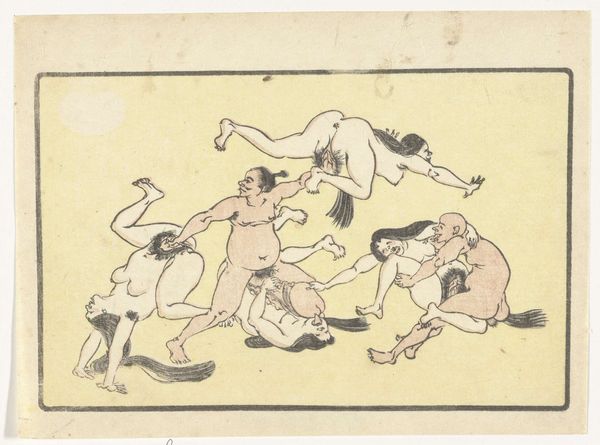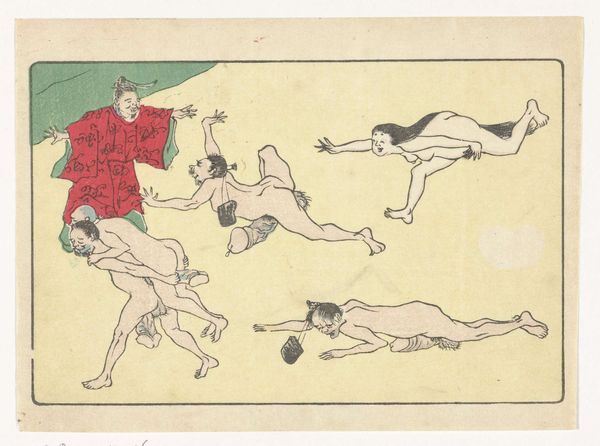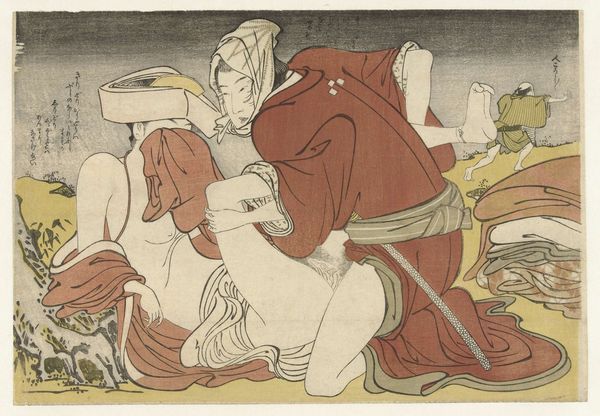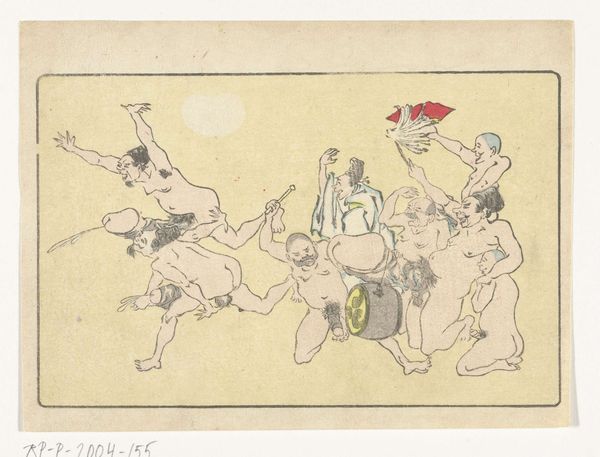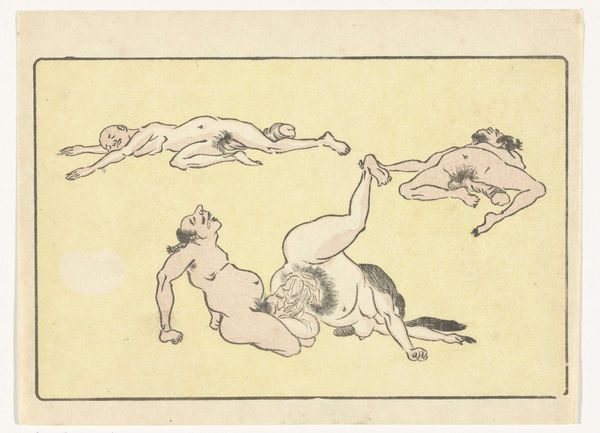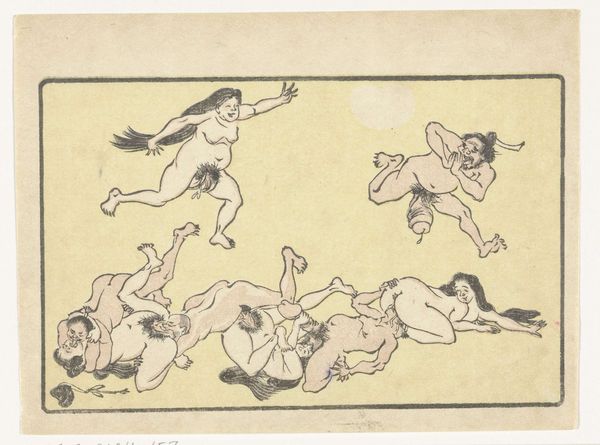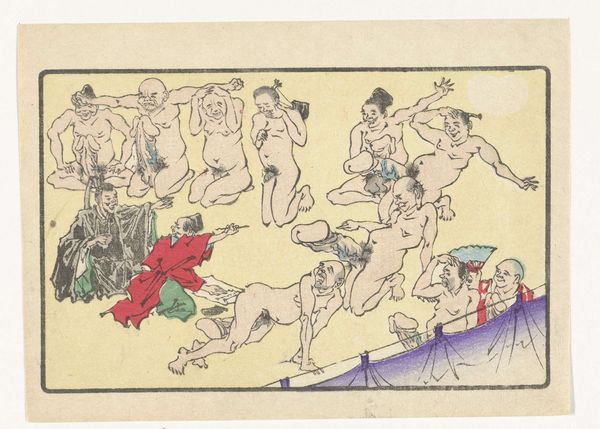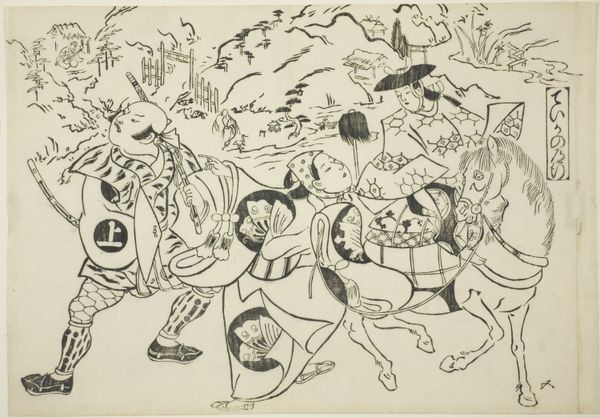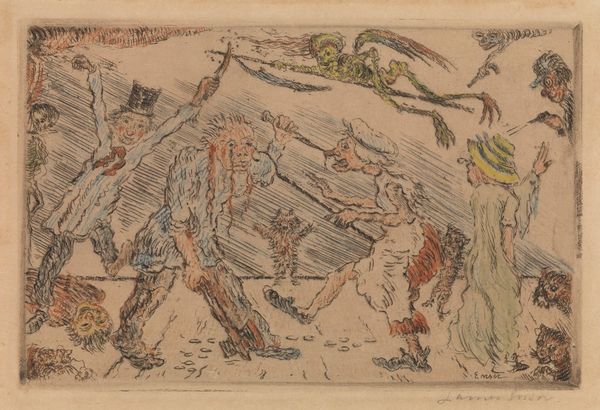
Dimensions: height 130 mm, width 176 mm
Copyright: Rijks Museum: Open Domain
Curator: Here we have "Archer and Nude Men," a Japanese watercolor print crafted around 1870-1880 by Kawanabe Kyōsai, presently held in the Rijksmuseum. It's an example of ukiyo-e, a genre that thrived during the Edo period. What are your initial thoughts? Editor: Visually striking! The figures are lively, almost comical, but the style seems to subvert any potential heroism with bawdy humour. There's a strong emphasis on line and flat color. It also looks like the physical production was carefully attended, since it could not be a piece made casually, which demands a reflection on why a bawdy or erotically themed print was being manufactured at all. Curator: Indeed. Kyōsai was known for his playful and sometimes satirical works, often subverting traditional themes. He operated during a period of considerable social and political upheaval as Japan modernized. The late Edo period saw the fall of the shogunate and the advent of the Meiji Restoration in the 1860s. His work served as commentary in the culture that shaped it. Editor: So, these prints became a space for the working-class population's expression against authority using their material realities. I’m also drawn to the contrast between the clean lines and the vulgarity of the subject matter. Look at the variety of colours that the printmaker applies: blues for some of the characters, others with pale red. I think Kyōsai intentionally complicates the perception of high and low art. Curator: Absolutely, it's this interplay of societal norms and transgression that makes the image compelling. Kyōsai challenged artistic and social boundaries, engaging with a rapidly transforming Japanese identity and perhaps playing with established conventions. There are few female figures and characters, though: it could have made another bold social statement with the same artistic effort. Editor: Right, but considering ukiyo-e was created for consumption, the fact is that Kyōsai was being resourceful while meeting production demand with a small piece to entertain common folks, despite it being sexually charged with some characters. It has social importance no matter what. Curator: This glimpse into late 19th-century Japan's vibrant cultural landscape provides an example of how art acted as social commentary. Editor: And it shows the ingenuity that some artists had back then, who employed prints to reflect or engage with everyday material realities of society.
Comments
No comments
Be the first to comment and join the conversation on the ultimate creative platform.

